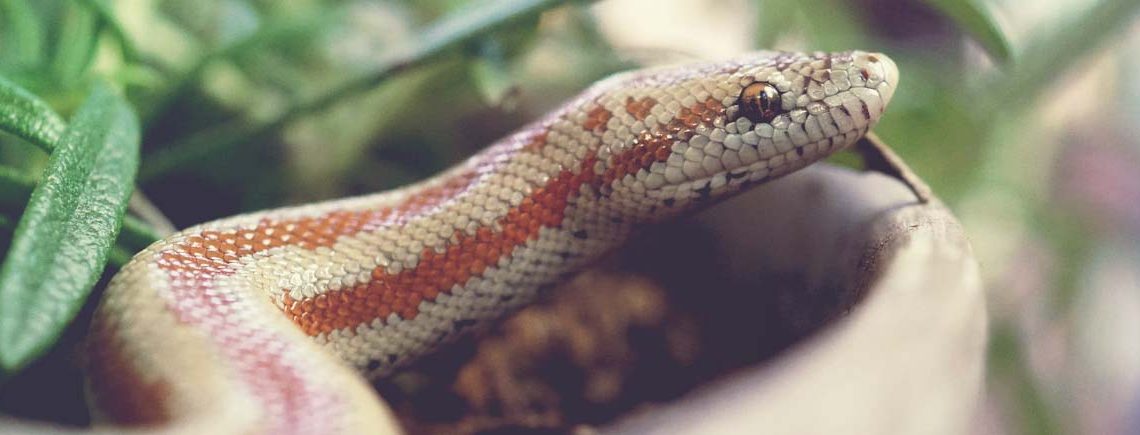Common Healthcare Issues in Snakes
Just like any other pet, snakes can suffer from various medical conditions and diseases. While most snake species are generally in good health, there are common healthcare issues that snakes may experience that will require veterinary attention.
In this blog post, I will explain the different types of healthcare issues found in snakes, how to treat them, and what you can do to reduce the risk of infection.

Dr. Bobby Ortiz, M.V.B.
Dr Bobby Ortiz, aka 'Dogtor Bob', is a small animal and exotic veterinarian based in Dublin. He has a strong interest in Small Mammal (rabbits, guinea pigs, ferrets) and Reptile medicine and surgery.
He grew up in a family of avid animal lovers, which led him to work as an Aquarist at the Long Beach Aquarium of the Pacific in California. It was there he decided he wanted to become a vet, and specialise in exotic animals, that needed the same care and medical attention that dogs and cats are given.
He lives with his wife and Brittany Spaniel Bodhi, and has dreams to build a new tropical marine fish tank in the near future!

Common Diseases Found in Snakes
It is essential your snake is taken to see a vet right away if you believe they are showing signs of any of the infections below. Some infections commonly found in snakes include…
1.Dermatitis
A skin infection usually found in snakes whose environment is either too moist or too dry, they usually suffer from red, inflamed skin with several small, blister-like lesions that may be found on the underside of the snake, often concealed them from view. If left untreated, they can develop into more serious infections and severe damage to the skin. Its always a good idea to check their skin frequently and often.
2. Pneumonia
Pneumonia can develop from mouth, sinus, eye or lung infections. Poor husbandry conditions like incorrect habitat temperatures, poor diet or new stressful events also increases chances of snakes developing pneumonia. You may notice nasal discharge, gurgling, bubbling or open mouth respirations if your snake has pneumonia. They may suffer from anorexia and often rest with raised heads. These can be caused by viruses or bacteria. These issues can be an emergency and will almost always need your local reptile veterinarian to help in a proper diagnosis.
3. Constipation
Constipation can arise if snakes are dehydrated, overfed, or in an environment with low humidity or temperatures. Symptoms include a lack of appetite and lethargy.
You can help your snake pass his food by feeding him smaller prey, soak his food in water to help with hydration, or gently handling him to help the food pass. Only attempt these methods if your snake appears otherwise healthy. If none of the above work, I recommend taking him to a vet, as if constipation is left untreated, it can lead to impaction, which can become septic and cause your snake to die from shock.
4. Retained Spectacle
A snake with a retained spectacle will have a cloudy, grainy look in the affected eye. It can stem from inadequate husbandry conditions, low humidity, and infections from parasites. It is important they are seen by a vet so they can remove the retained spectacles. Removing a retained spectacle inappropriately can lead to further damage and is not recommended.
5. Thermal Burns
A common injury in snakes, they are caused when there is no protective mesh or covers over heat lights in their vivarium, uneven heating of mats, cords, heat rocks or caves, and water damage. Injury can range from mild to severe, causing damage to internal organs. Depending on the severity of the burns, most can be treated medically with antibiotics, burn creams, and pain relief from your veterinarian. Some, however, can prove to be fatal.

Reducing Risk of Infection in Snakes
There are many ways to help reduce the risk of your snake falling ill or sustaining an injury, such as:
- Make sure the snakes’ enclosure is the correct temperature. Keep a guarded heat lamp at one end of the vivarium so your snake can keep warm, while using the other end of the enclosure to cool down. This will allow the snake to move around and regulate his own temperature. Keep the hot end at around 27 – 30⁰C, and the cool end around 20 – 24⁰ C. The lamp must be guarded to prevent burns or any other type of injury.
- Setting the correct humidity is important to ensure your snake’s respiratory system is healthy and for a good skin shedding cycle. A hygrometer, like EXO TERRA Hygrometer monitors the vivarium humidity levels, which should be around 40 to 50%. If it is too high, your vivarium will need more ventilation.
- Make sure any animal prey you feed them is thoroughly defrosted, and that the width is no greater than 1.5 times the widest part of your snake’s body.
- It is easier for snakes to ingest several small prey items rather than one large one at once. It is important you do not handle your pet snake for at least 24 hours after eating to prevent regurgitation.
- Live animals should not be fed (it is illegal to do so in Ireland the EU), as they could physically harm your snake or may carry bacteria that is harmful to snakes.
- Always ensure they have access to fresh, clean water in a dish that is large enough to allow the snake to bathe. The water should be replaced daily. If the snake defecates in it; the bowl must be cleaned and disinfected.

